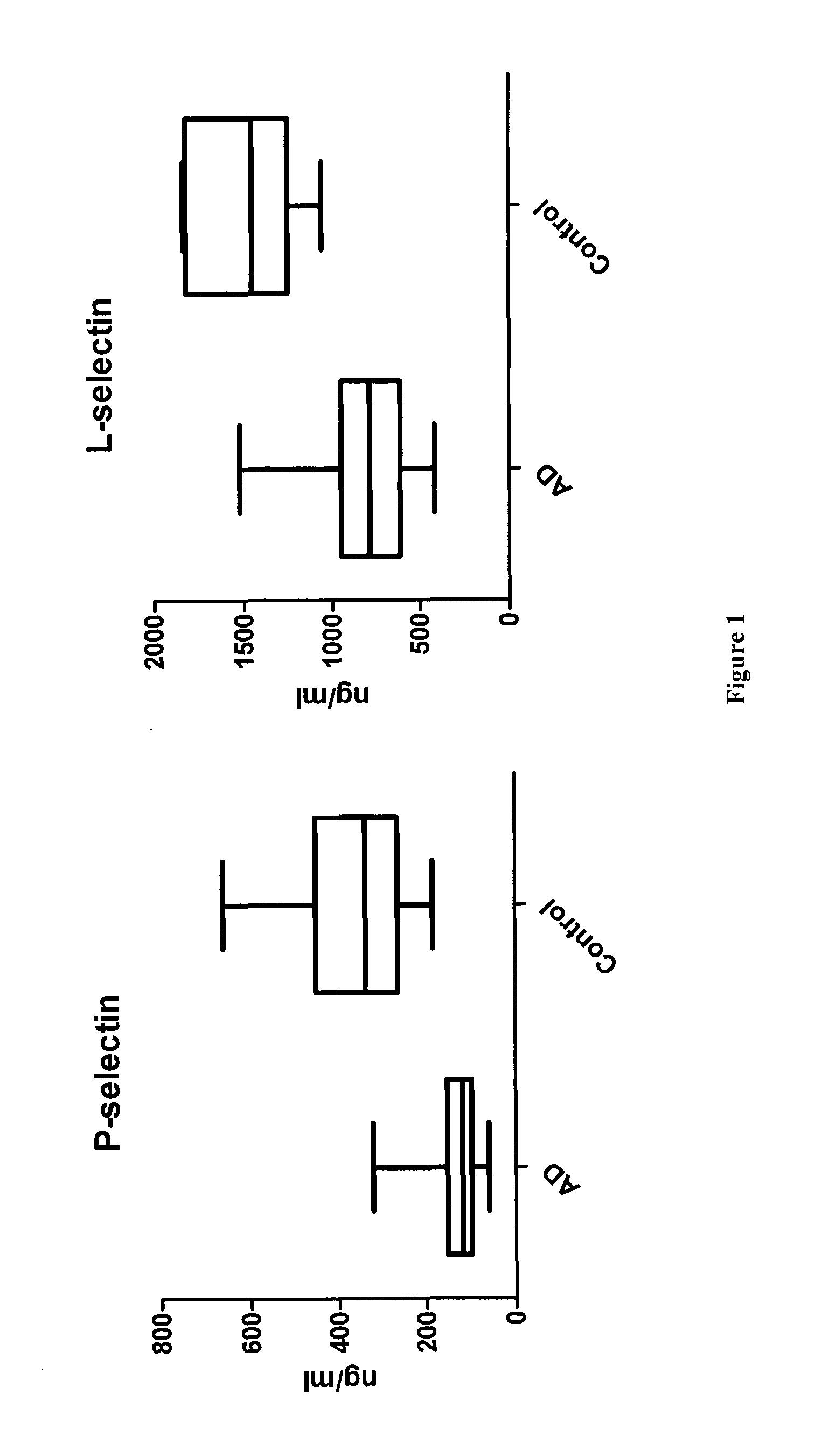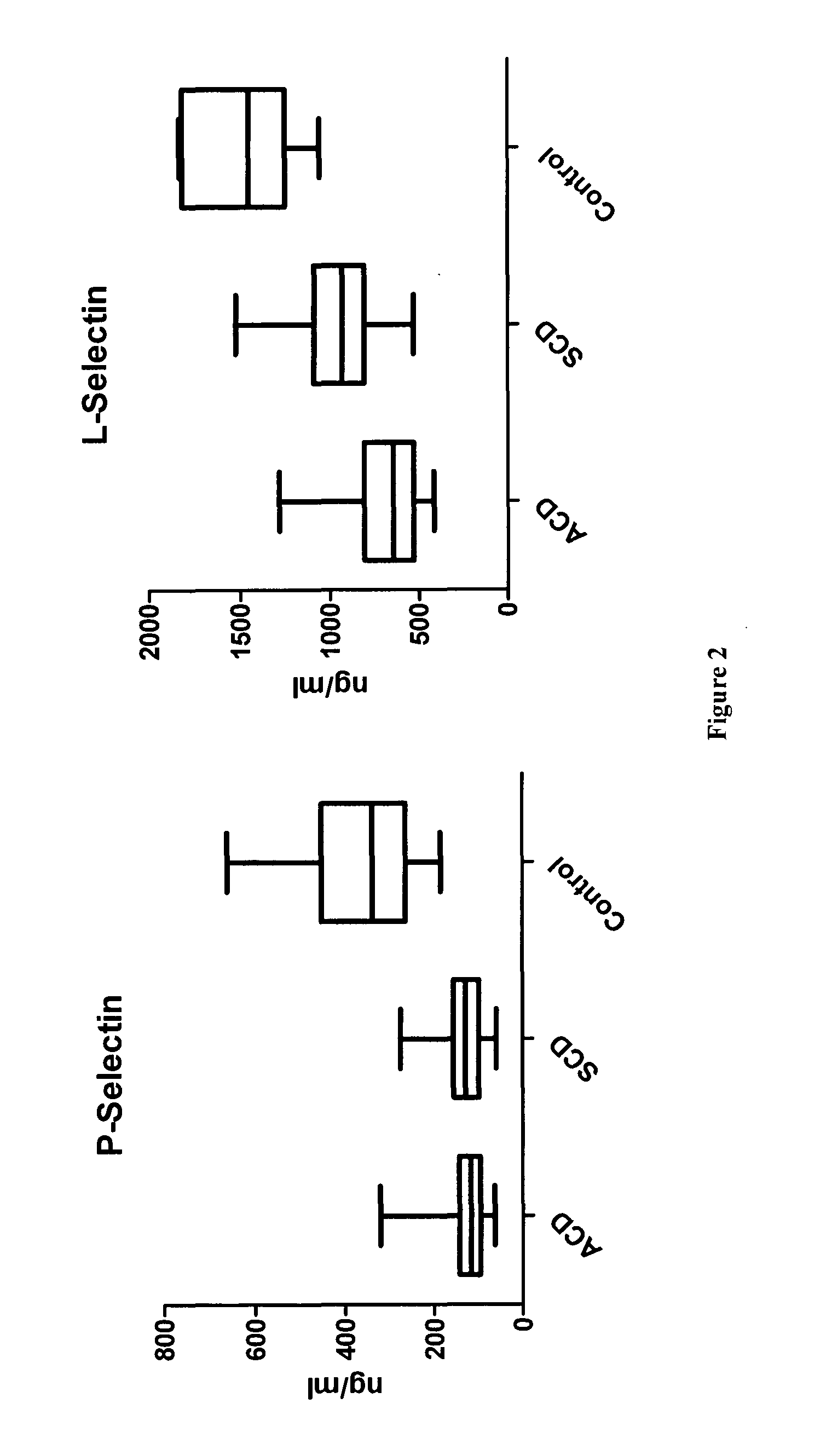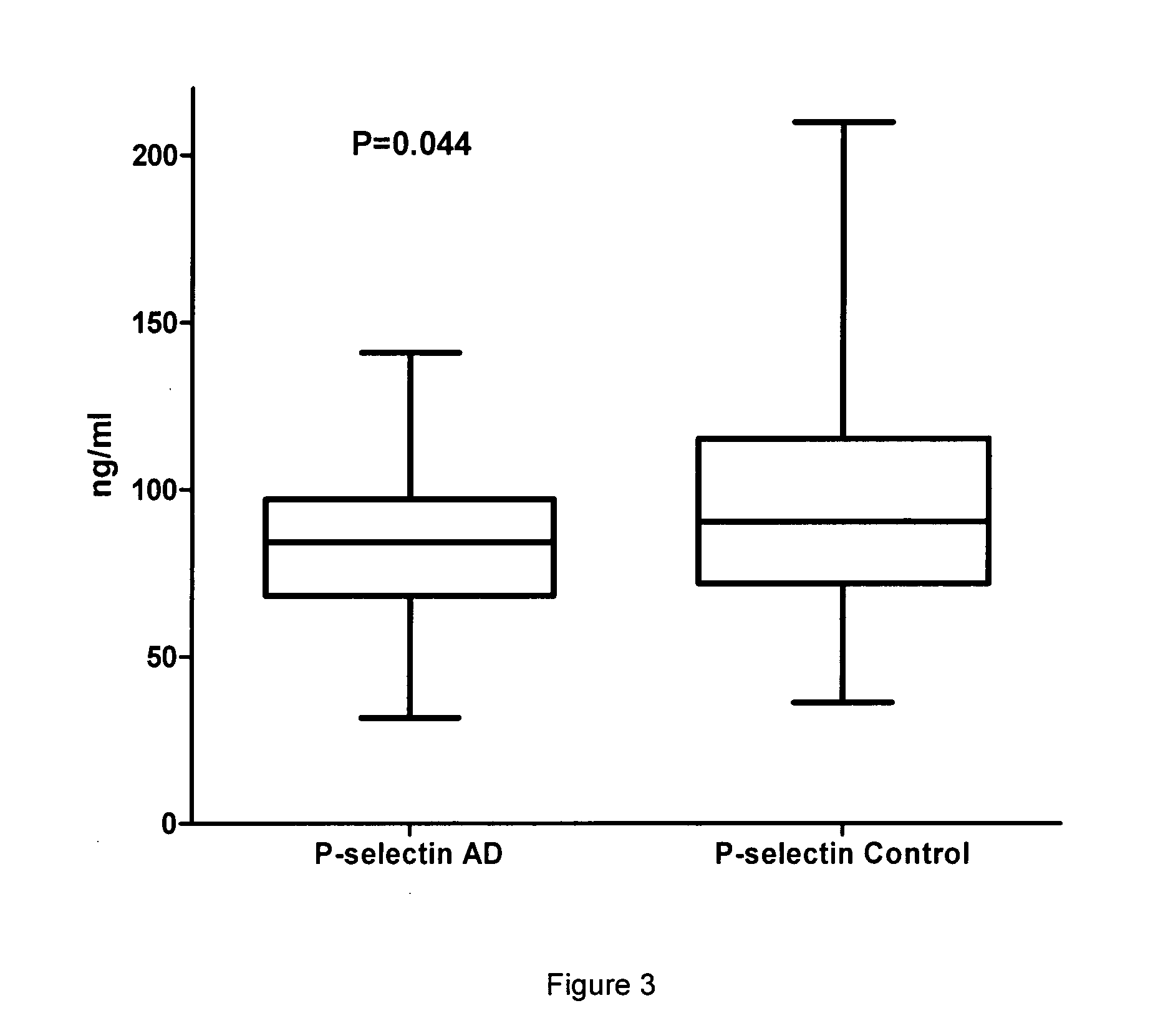Methods and compositions for the diagnosis and prognosis of alzheimer's disease
a technology for alzheimer's disease and compositions, applied in the field of biomarkers for alzheimer's disease, can solve the problems of mild memory deterioration, rapid death of the mouse, clinical recognition, etc., and achieve the effect of assisting in diagnosis
- Summary
- Abstract
- Description
- Claims
- Application Information
AI Technical Summary
Benefits of technology
Problems solved by technology
Method used
Image
Examples
Embodiment Construction
[0039]The biomarkers useful in the present invention can be detected or quantified alone. Preferably the biomarkers are detected or quantified in combinations of two or more of the specific proteins. P-selectin and / or L-selectin can be detected or quantified together with other biomarkers of AD, such as (but not limited to) MCP-1, IL-1α, IL-1β, IL-8, IFN-γ, MCP-1 and VEGF. Other biomarkers of AD with which the biomarkers of the current invention can be combined to aid in diagnosis of AD include β-amyloid protein and tau protein. The peripheral biological fluid is preferably plasma or serum. Suitable controls are, for example, the levels of biomarkers measured in the patient prior to the onset of AD, a disease-free patient group of a similar profile or a suitable data set derived from literature values. Significant differences in the relative amounts of the aforementioned protein(s) between the AD patient and control aids in the prognosis of ACD or SCD. Recognised prognostic biomarke...
PUM
| Property | Measurement | Unit |
|---|---|---|
| concentration | aaaaa | aaaaa |
| speed | aaaaa | aaaaa |
| magnetic resonance imaging | aaaaa | aaaaa |
Abstract
Description
Claims
Application Information
 Login to View More
Login to View More - R&D
- Intellectual Property
- Life Sciences
- Materials
- Tech Scout
- Unparalleled Data Quality
- Higher Quality Content
- 60% Fewer Hallucinations
Browse by: Latest US Patents, China's latest patents, Technical Efficacy Thesaurus, Application Domain, Technology Topic, Popular Technical Reports.
© 2025 PatSnap. All rights reserved.Legal|Privacy policy|Modern Slavery Act Transparency Statement|Sitemap|About US| Contact US: help@patsnap.com



